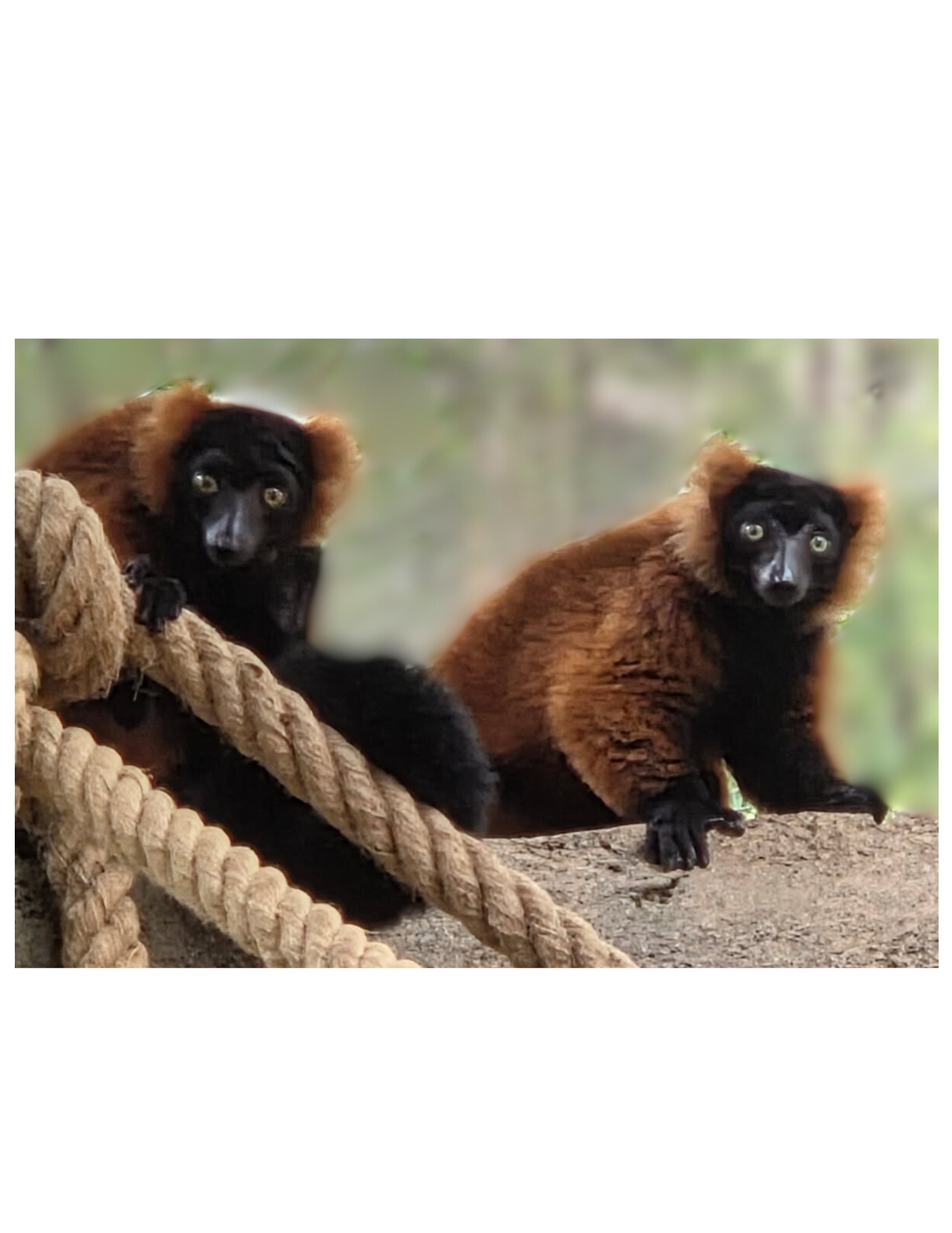
Red Ruffed Lemur


Eats
Red ruffed lemurs are frugivores, primarily eating fruit, but they also consume nectar, leaves, and seeds, especially during the dry season. As they feed on nectar, they help pollinate rainforest plants by bringing pollen to flowers on their furry snout.
Lives
All lemurs, including red ruffed lemurs, are found only on the island of Madagascar, just off the east coast of Africa. Red ruffed lemurs live in the tropical lowland rainforests (<1200 m) of northeastern Madagascar. They spend nearly all their time high up in the forest canopy, where they move nimbly through the treetops while searching for food.
Behavior
Red ruffed lemurs are very social and live in groups of 5 to 32 individuals, mostly active during the day. They communicate using a variety of sounds—scientists have identified 12 distinct calls—as well as by scent marking. To strengthen their social bonds, they groom each other with their specialized lower front teeth, which act like a comb.
Description
Red ruffed lemurs have mostly rusty red fur with black on their face, underside, and tail, and a white patch on the neck. Their name comes from the fluffy tufts around their ears on the sides of their head. They use their long tail for balance in the treetops, their long snout to reach into flowers, and a specialized “toothcomb” and grooming claw to keep clean.
Did you Know?
Red ruffed lemurs play a key role in their ecosystem by spreading seeds and pollinating plants as they eat. They are one of the largest pollinators in the world!
How can I Help?
The biggest threat to red-ruffed lemurs is habitat loss from logging valuable trees and burning forests to make room for homes and crops like vanilla. Two of the most effective ways people in the U.S. can help protect these lemurs are by supporting organizations that work to stop deforestation in Madagascar and by reducing the demand for vanilla and coffee sourced from there; using products that are Rainforest Alliance Certified will ensure that you are not damaging critical habitat.







_inPixio.png)
















.jpg)






.png)





